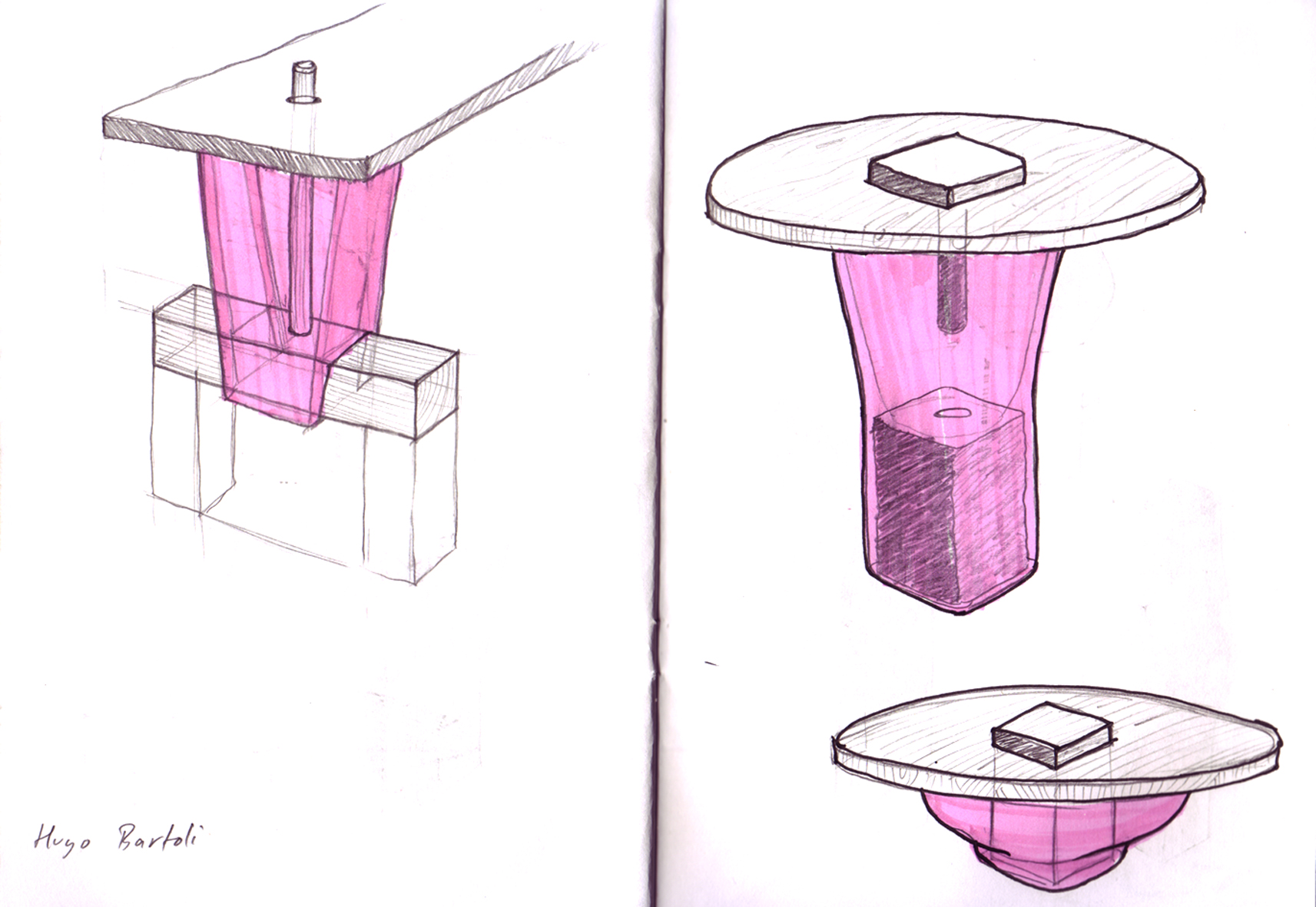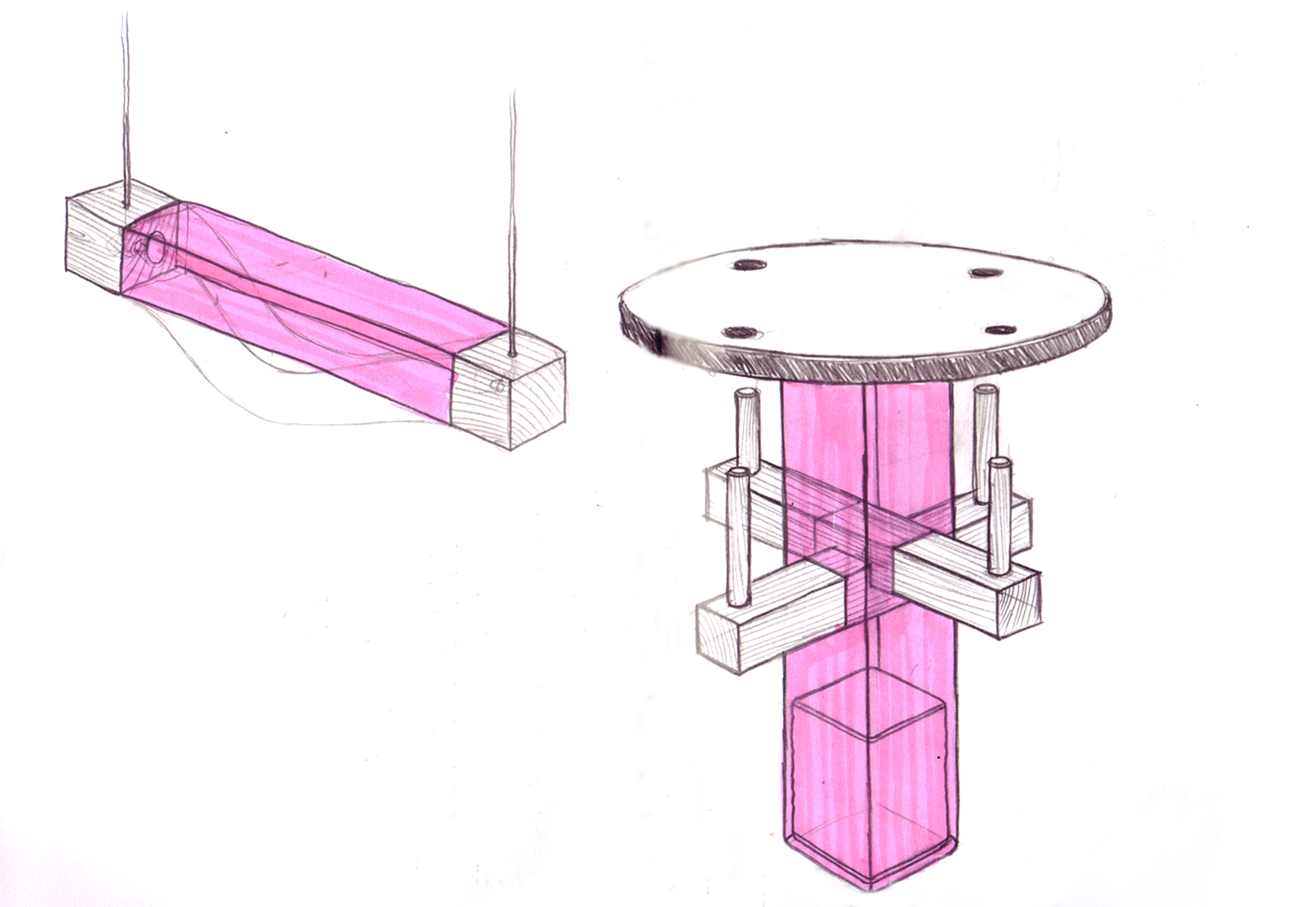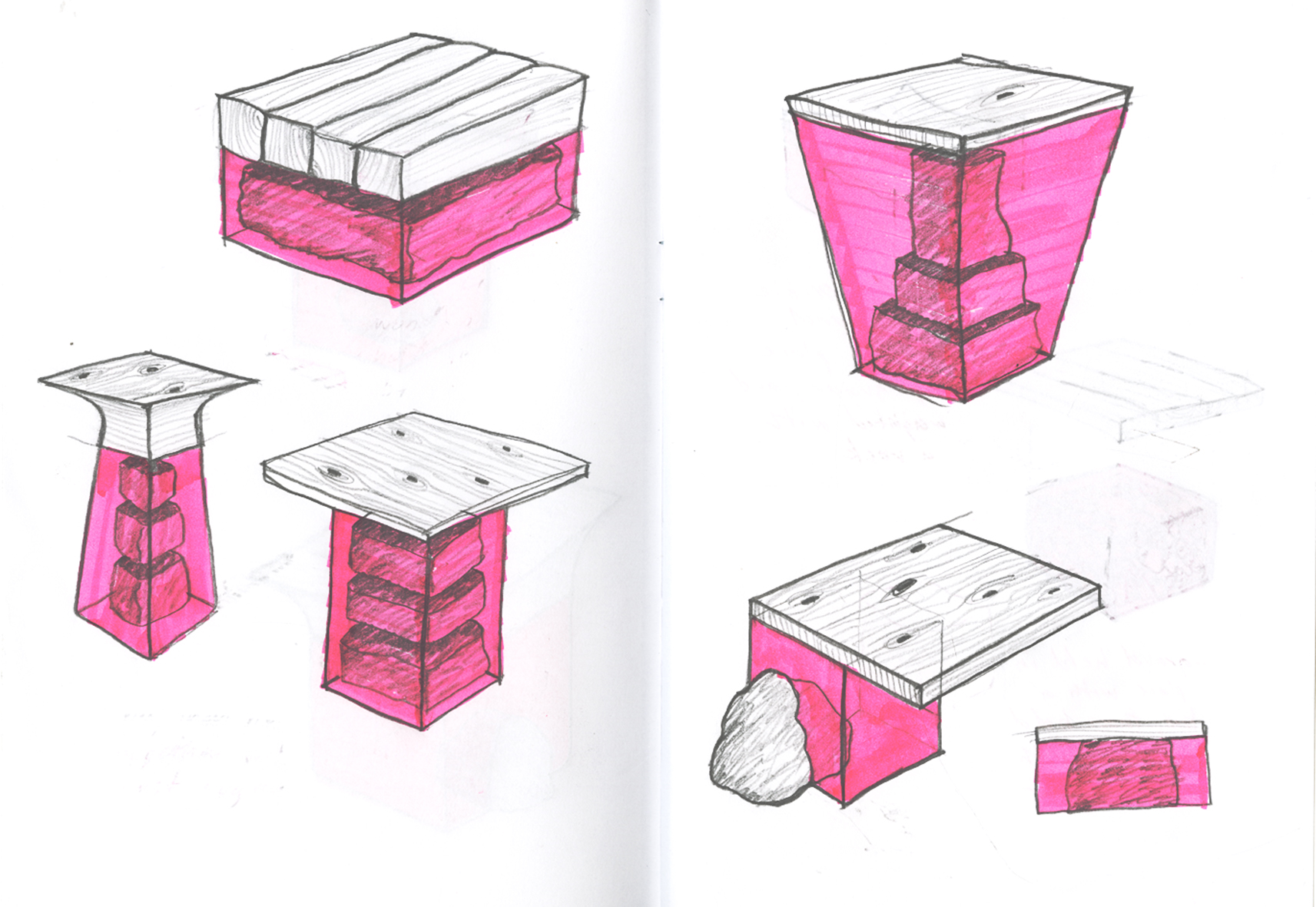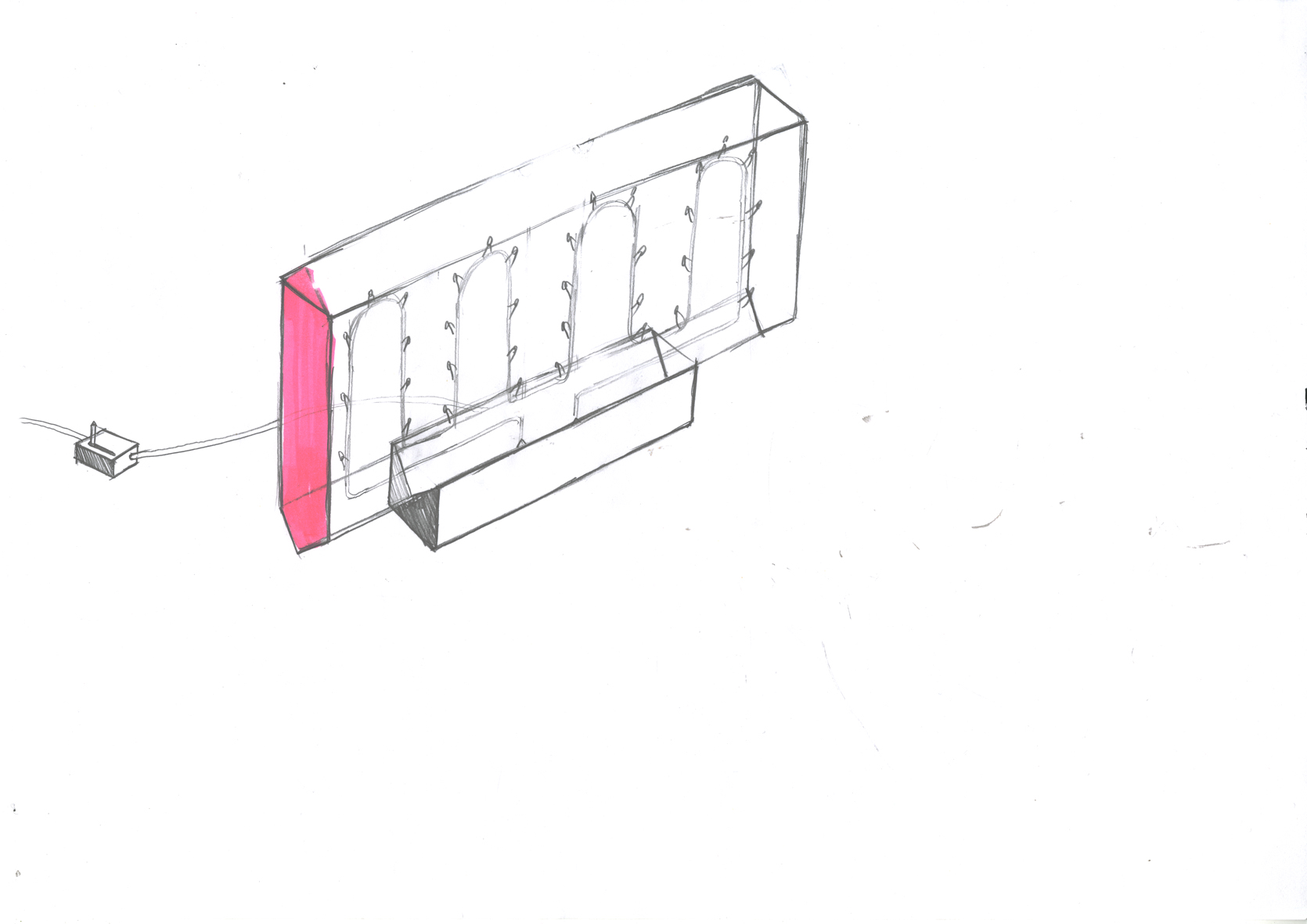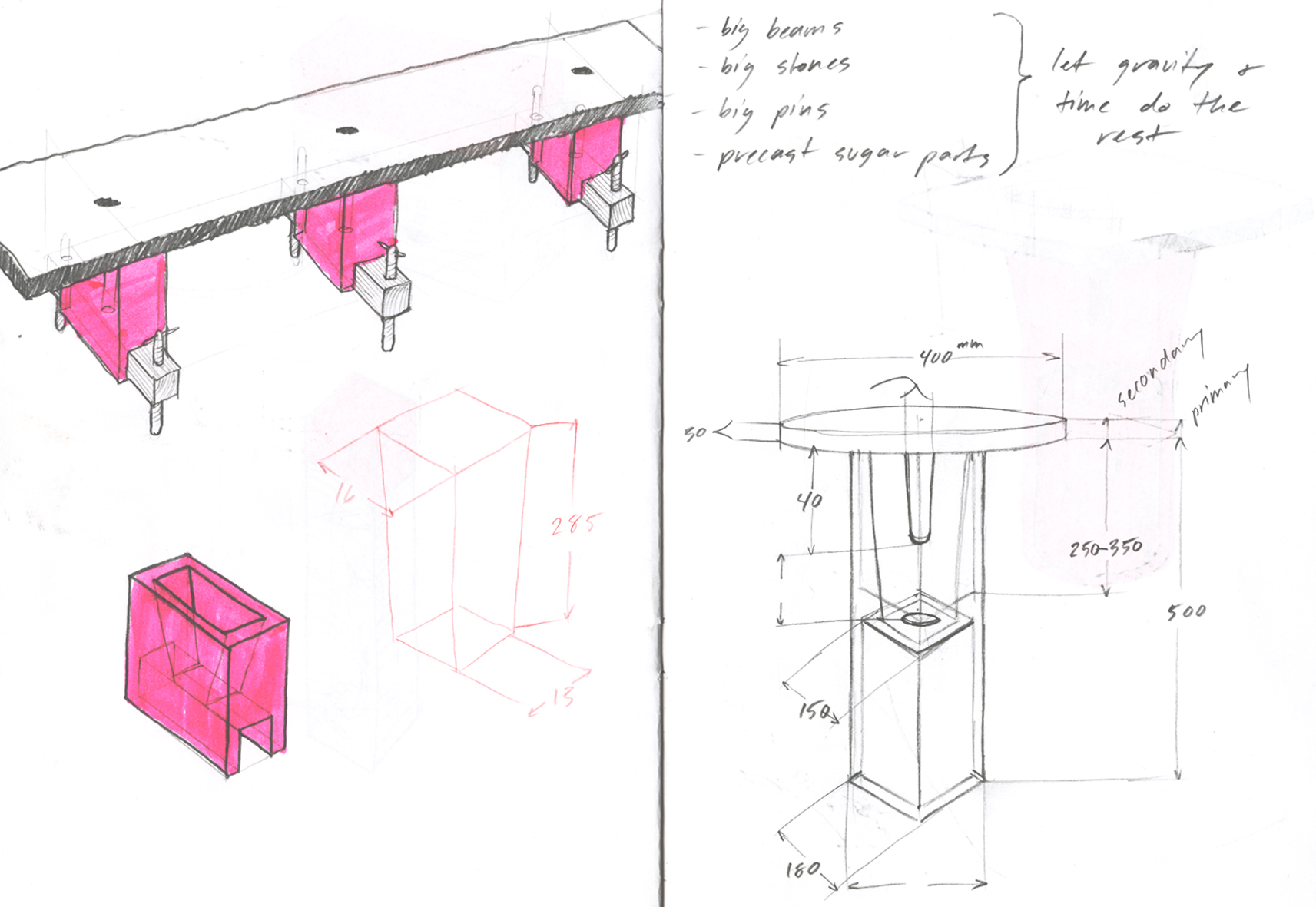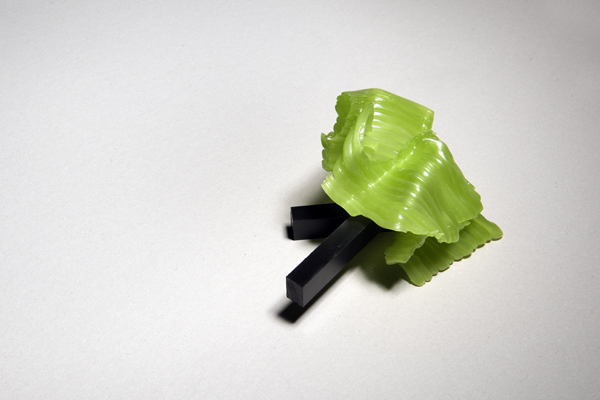Watermelon Works 2012
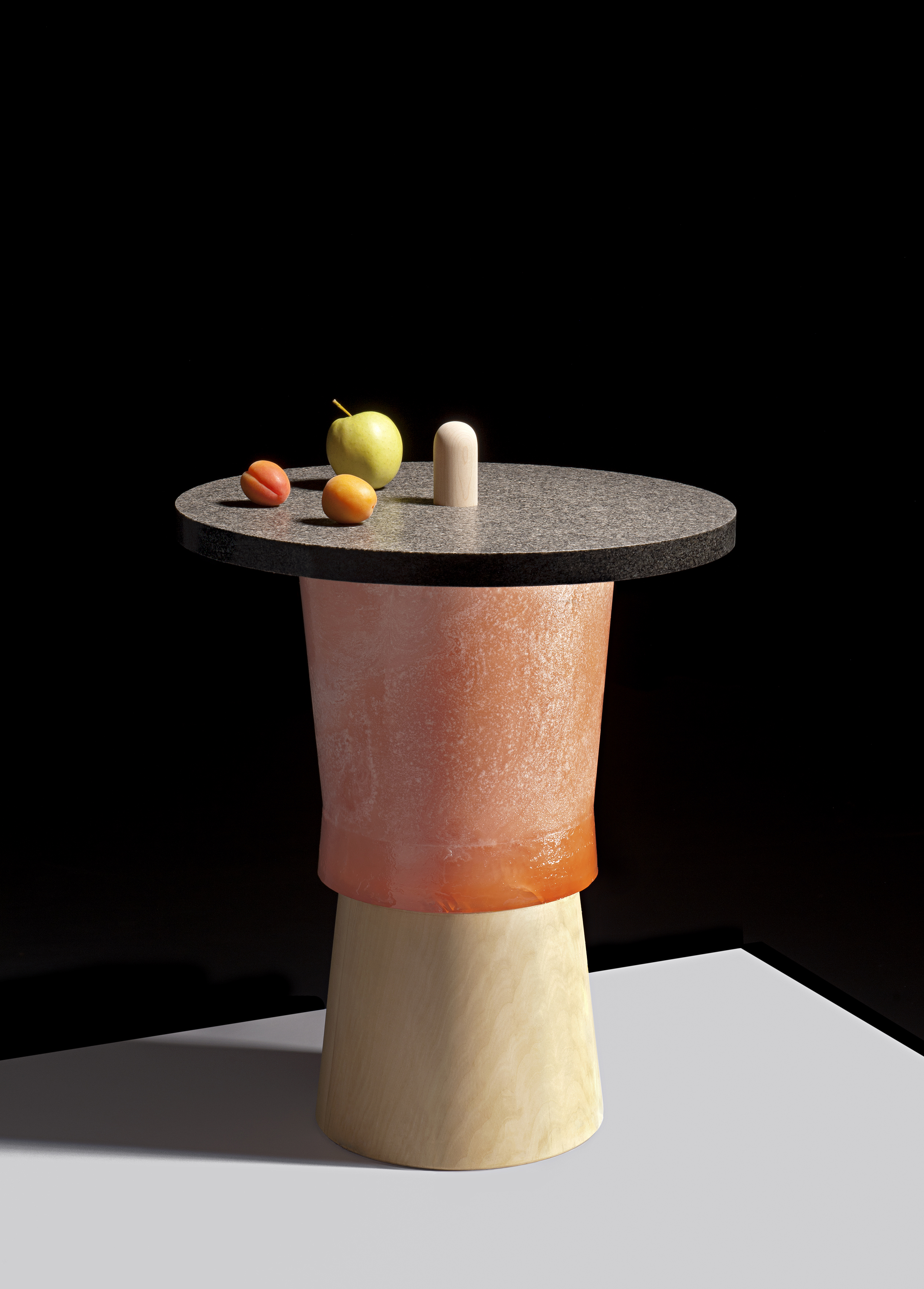
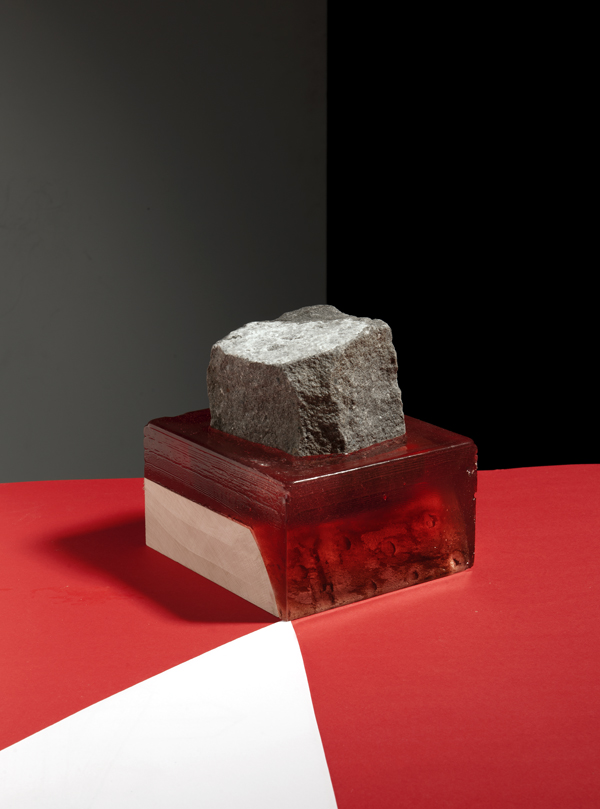
In 1964, American author Richard Brautigan wrote a short fictional novel, In Watermelon Sugar, about an imaginary world whose inhabitants construct their lives solely with the materials they have around them. Stones are gathered, wood is harvested from the nearby forest, and sugar from watermelons is boiled and worked into numerous forms. The character’s lives are framed by a communal desire to live in harmony with their environment, shunning the remains of an advanced technological society which is remembered only in piles of rotting relics called ‘The Forgotten Works’.
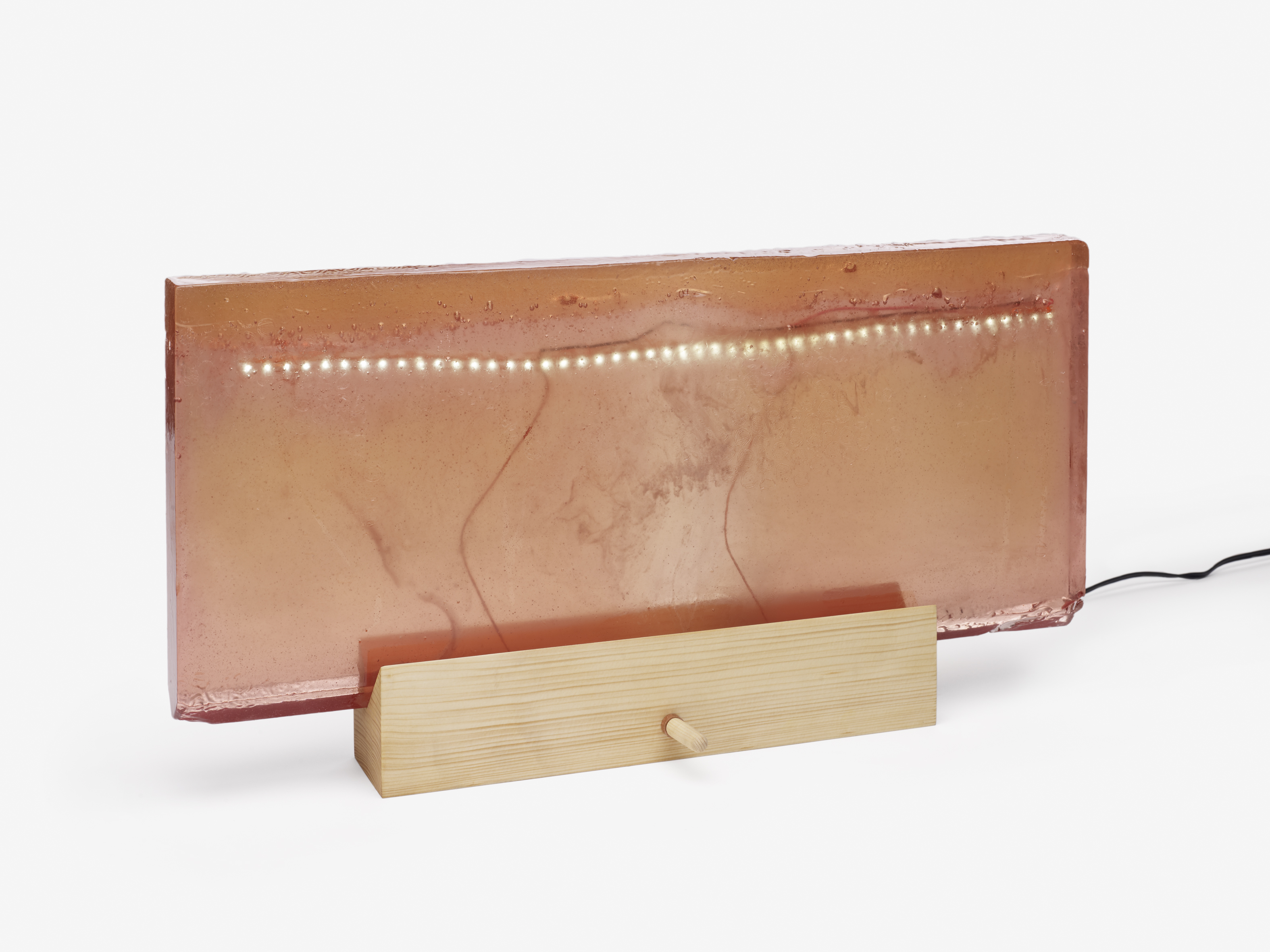
Watermelon Works is both a tribute to the novel and a research project inspired and motivated by the atmosphere and poetic realities of Brautigan’s fictional world. The project resulted in an illustrated version of the novel, a series of drawings, numerous experiments and two finished design-objects. The experiments centered on the use of sugar in combination with wood, stone and modern technologies such as led lighting and CNC machining. In creating these designs I endeavored to ask questions, to challenge conventional views concerning temporality and sustainability within the world of industrial design.
Sugar is a fascinating material, capable of taking many forms. Similar to metal, glass, water and wax, it exists in different states, a supercooled liquid or crystalline structure constantly affected by its environment. My experiments led in many directions, fed by reading, drawing and Youtube. Fascinated by a deep dive into the world of candy making, I eventually focused on making various forms of hard candy. I used its properties in a number of ways, as a glue, a binder, a thermo-set structure and eventually as a castable medium.
I have always been enamored with people groups that, past or present, utilize knowledge of the natural world and its resources to construct their lives: structures, tools, building materials etc. With constant use and care the objects, places and systems we build can last indefinitely, even if constructed with organic or minimally processed materials. Perhaps it is not the material itself that is most important to the longevity of our built objects and environments, but the energy and focus we give their extraction, formation and use.
Photographs by Philippe Fragnière, ÉCAL, and Charles Mathis.
Photographs by Philippe Fragnière, ÉCAL, and Charles Mathis.
